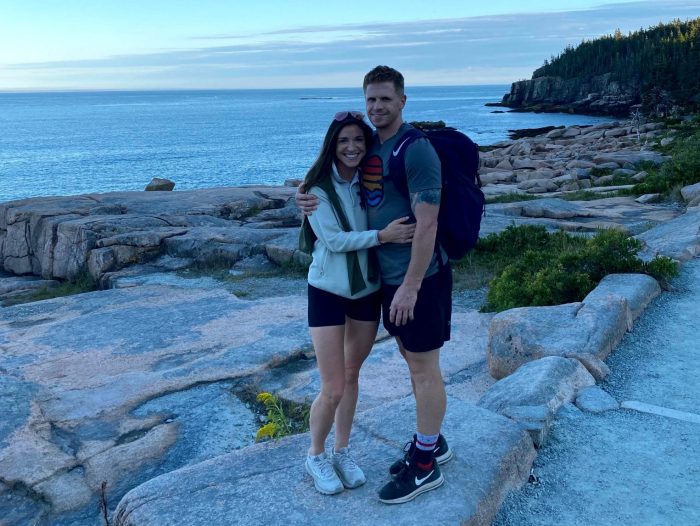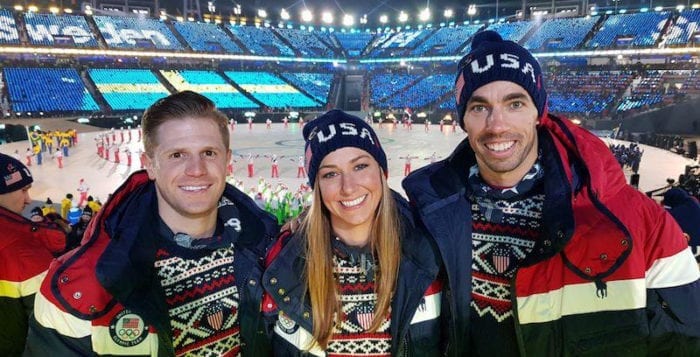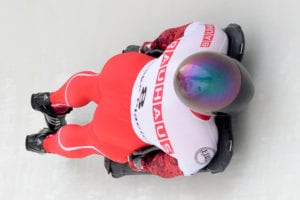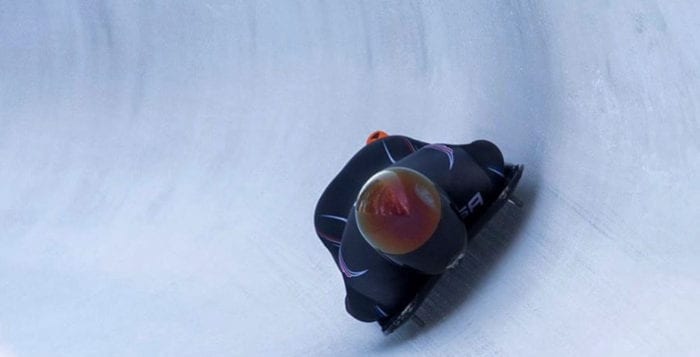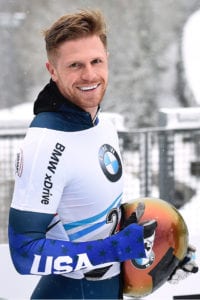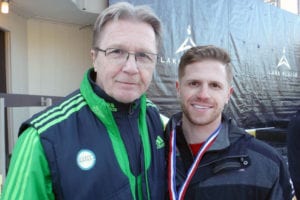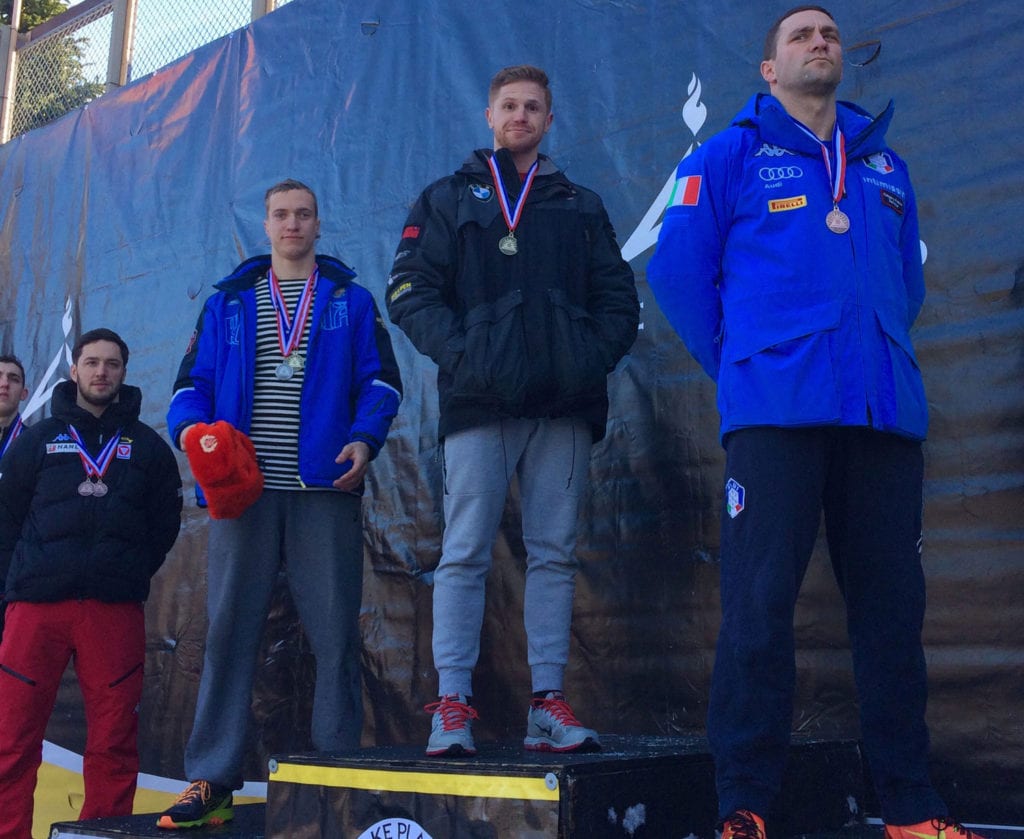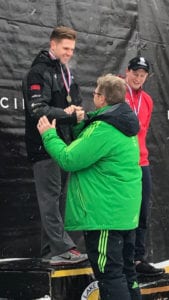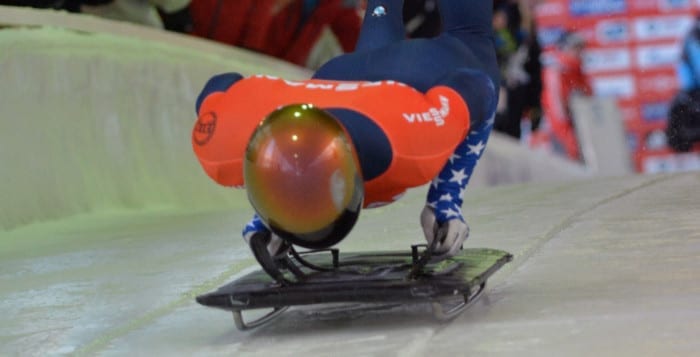John Daly doesn’t sit still for long.
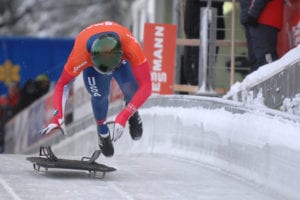
Known for flying down winding tracks around the world at over 80 miles per hour with his head inches above the ice, Daly continued to move his life forward, even during the pandemic.
The 35-year-old Daly, who has competed in three Olympics and has retired twice, launched his second comeback, hoping to make the United States team that will travel to Beijing for next year’s winter games.
At the same time, Daly took a big step in his own life, getting engaged to Kimberly Lindeman, who is also a graduate of Smithtown High School.
Daly felt the same passion to race down mountains at breakneck speed, banking impossible turns as hoarse spectators urged him on and family and friends shook cowbells at the top of frozen mountains as he did when he first started racing almost two decades ago.
“If you still have the chance to compete, why not?” Daly said. “The drive is there. The passion is there. My life is great, but there’s nothing like another Olympic games.”
Indeed, Daly had a promising start to his second return to skeleton several months ago, when he placed first in Lake Placid at the USA skeleton selection races in November, earning a spot on yet another national team.
Daly “came in with no expectations of how he was going to do and just to see if he still had it,” USA Skeleton Head Coach Tuffy Latour said from Austria, where the team was preparing to compete in a World Cup event. “Apparently, he does, as he finished first in our team trials and put on a great performance. His sliding is as good, if not better, than I’ve ever seen him.”
Latour, who has led the American skeleton effort since the 2010 season, said he is pleased to have Daly compete for a spot on the Olympic Team.
“I’m sure [Daly] is going to build on all the skills and knowledge he’s built over the years,” Latour said. “He’ll put that to good use.”
Daly plans to compete in several races this year and next fall, where he hopes to score enough points to earn a chance for the nomination for selection as USA1 or USA2 next January 16th.
A talented sprinter who tapped into the kind of sprinter’s speed at the top of the race that is critical to success in the sport, Daly placed 17th in his first Olympics in 2010.
It was the 2014 competition that continues to play out in his mind and, in some ways, to drive him back to the mountains of the world, despite his antipathy for the cold, an irony not lost on him.
“I wish I was better at something else,” Daly said. “My hate for the cold is still there and strong. It hasn’t gotten any better. I just learned how to deal with it.”
“My hate for the cold is still there and strong. It hasn’t gotten any better. I just learned how to deal with it.”
— John Daly
On Feb. 15, 2014, a day Daly describes as the “worst of his life,” he was in prime position to earn that elusive Olympic medal, as he approached the top of the fourth and final heat in Sochi, Russia.
As Daly took those first explosive steps onto the ice, his sled popped out of the grooves, leaving him with a botched start that robbed him of his dream.
“I was literally 55 seconds away from getting that moment and it never happened,” Daly said. “It’s one of those things that doesn’t ever go away.”
Latour recalls that day as well, agonizing over how one of his American competitors missed out on a medal even as Daly’s long-time friend and now member of the coaching staff, Matt Antoine, earned a bronze that day.
“It was heartbreaking for me,” Latour said. “I’m certain it inspired him to come back for 2018 and now 2022. Everybody is chasing a medal. I don’t blame him one bit for coming back out and giving it another shot.”
As a 35-year-old, Daly recognizes that he has to plan his training and performing regimen appropriately.
“Training is still intense, but it’s less often,” Daly said. “I can’t go 15 rounds anymore. I don’t need to be great for the whole season: I just have to be great at the end of the season” when he feels he needs to be at the top of his game to ensure the best racing results.
This year, as Daly prepares for a possible spot on his fourth Olympic team, he and his teammates have a new way to prepare for competitions. The skeleton and bobsled team has a new ice push facility at Mt. Van Hoevenberg in Lake Placid, which is the first indoor ice push facility in the United States.
The center simulates the first 65 meters of a skeleton run, with a flat 25 meters and then a downhill section, which comes back up again. The center has three starting blocks and allows competitors to push on ice through the summer months, when they might otherwise train on dry land and lift weights.
Latour said the track in Beijing is “probably easy to get down, but is hard to produce a fast time.”
When Daly, who works as an account executive at medical device maker BardyDX, was trying to decide whether to return to the sport, he consulted with Lindeman.
“It was her idea for me to go back as well,” Daly said.
Lindeman suggested to Daly that his nephews and niece would see their uncle competing for a spot on the Olympic team, which would be “so special” for them.

Love During the Pandemic
Daly and Lindeman knew of each other in high school. Lindeman and Daly’s sister Kristen, who are two years younger than John, were friends in high school.
The couple connected in December of 2019, when Lindeman moved not far from Daly in Brooklyn. On their first date, which was Dec. 12, Lindeman wasn’t even aware that it was a date. She thought they might be hanging out as friends.
Originally, the pair planned to go out for drinks, but that turned into dinner and drinks. The date lasted over seven hours and would have likely continued except that the bartender announced last call.
“That’s a testament to how good of a time we were having,” Lindeman said.
Daly said he was “hooked” after that first evening.
The next two dates were similar, with the pair staying out late into the night.
Just under three months from the start of their relationship, Lindeman and her father Bill, who share a birthday in the early part of March, had a large family birthday gathering.
Daly had met one of Lindeman’s two sisters and Lindeman figured she might as well “rip the band aid” and allow him to meet everyone else at the same time.
The evening went well for her suitor, as “everyone loved him. They thought he was wonderful.”
Indeed, just a few weeks later, the pandemic hit and Daly and Lindeman decided to quarantine together.
Her mom Valerie, who also grew up in Smithtown, and her father, who owned an insurance agency in Smithtown for 25 years, appreciated that their oldest of three daughters had company during this period of isolation, especially since then knew of Daly and his family.
Quarantining with Daly “accelerated our relationship so much,” Lindeman said. During the pandemic, the concentrated time together would either cause the relationship to meet its demise or to solidify their bond, Lindeman said.
Lindeman appreciated Daly’s ability to maintain a positive mindset and stay optimistic despite the challenging environment around them.
“We balance each other well,” Lindeman said. Daly “keeps my spirits up.”
“We were on the same page with all the important topics. I knew very early on that I had something extremely special.”
— Kimberly Lindeman
During their time in isolation, they did considerable cooking together. They also took drives and went hiking, as long as the weather wasn’t too cold. Lindeman also doesn’t appreciate the cold.
They also enjoyed Netflix marathons, watching “Tiger King,” “Love is Blind,” and “The Office,” which they rewatched several times.
During all the challenges of the pandemic, Lindeman and Daly said they appreciated the connection they had forged and the opportunity to spend time together.
“We tried to enjoy the time we had together,” Lindeman said. “A lot of new relationships didn’t have that.”
On Saturday, Jan. 15, just over 15 months since they started dating, Daly had put on a suit and said they were planning to go to one of her favorite restaurants.
Lindeman was worried he’d be cold sitting outside in his suit. Once she was ready to go, he brought her a video that he said she had to watch alone. The video, which she viewed alone in the bedroom behind a closed door, included scenes from their time together, with some videos she didn’t know he had recorded, including the two of them dancing in the kitchen.
After she finished the video, she opened the door and Daly had lit candles down the entire hallway. Daly said he knew Lindeman was unaware of his plans because she didn’t get her nails done.
After he proposed, Daly told Lindeman they weren’t eating out because they were going to celebrate, in a socially distanced way, with both of their parents and siblings. He assured her that he had rebooked a dinner reservation for the next Tuesday.
Lindeman said she wasn’t completely surprised, despite her lack of a manicure, because she and Daly joke that every month during a pandemic is like three-and-a-half months in a normal year.
“We both had a lot of life experience and we had a lot of those conversations about what we wanted out of life and was important upfront,” she said. “We were on the same page with all the important topics. I knew very early on that I had something extremely special. I knew whatever happened, good or bad, that I had him and we’d figure it out together and we were a team.”
As he prepares for the possibility of rejoining the Olympic team, Daly hopes the fourth time brings a long-awaited and hard-earned redemption on the ice from 2014, when he was less than a minute from his athletic dream.
Displaying the optimism and the perspective that appealed to his fiancée, , Daly recognizes that he’s been incredibly fortunate if his worst day includes missing out on Olympic hardware.

